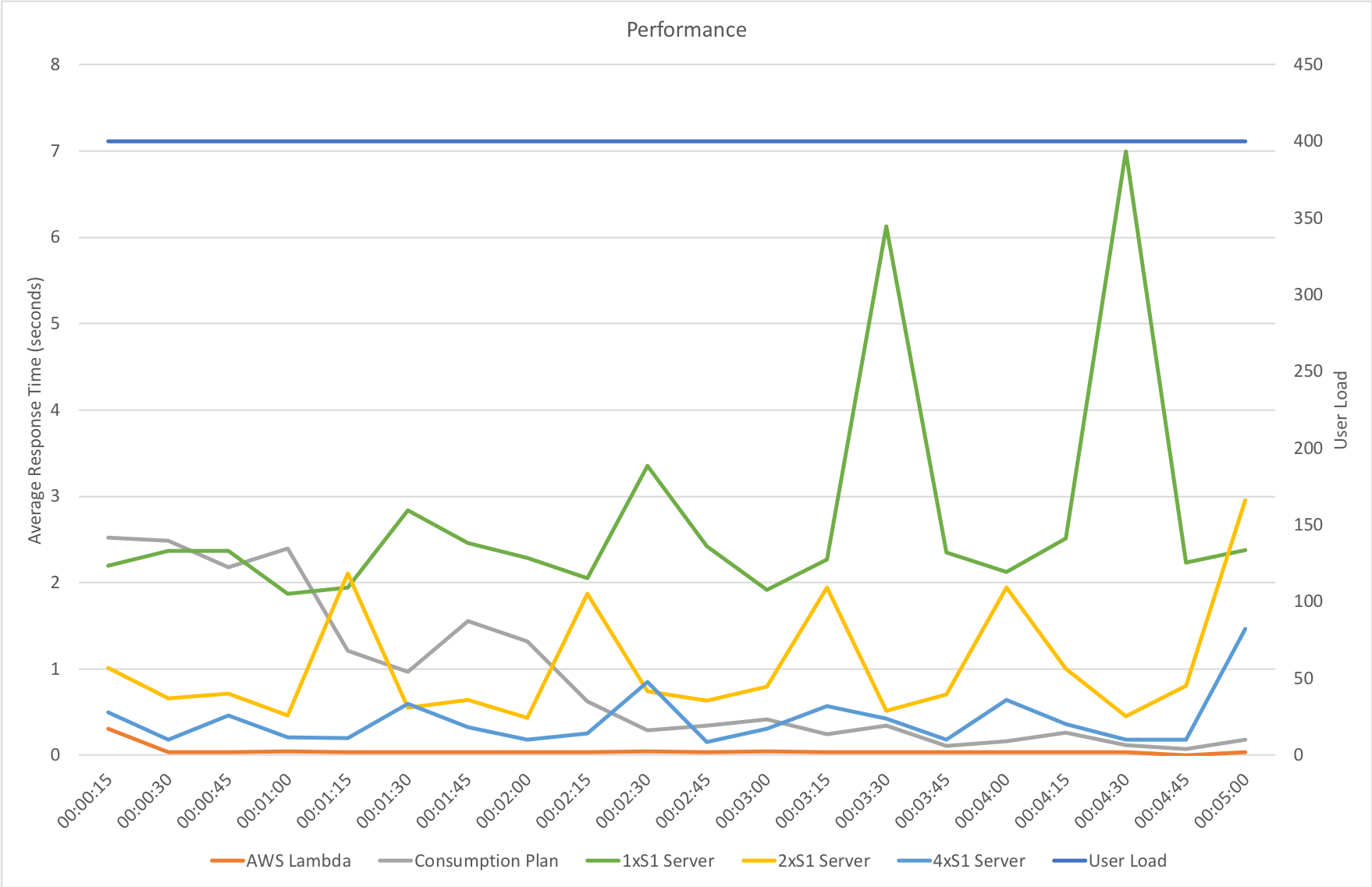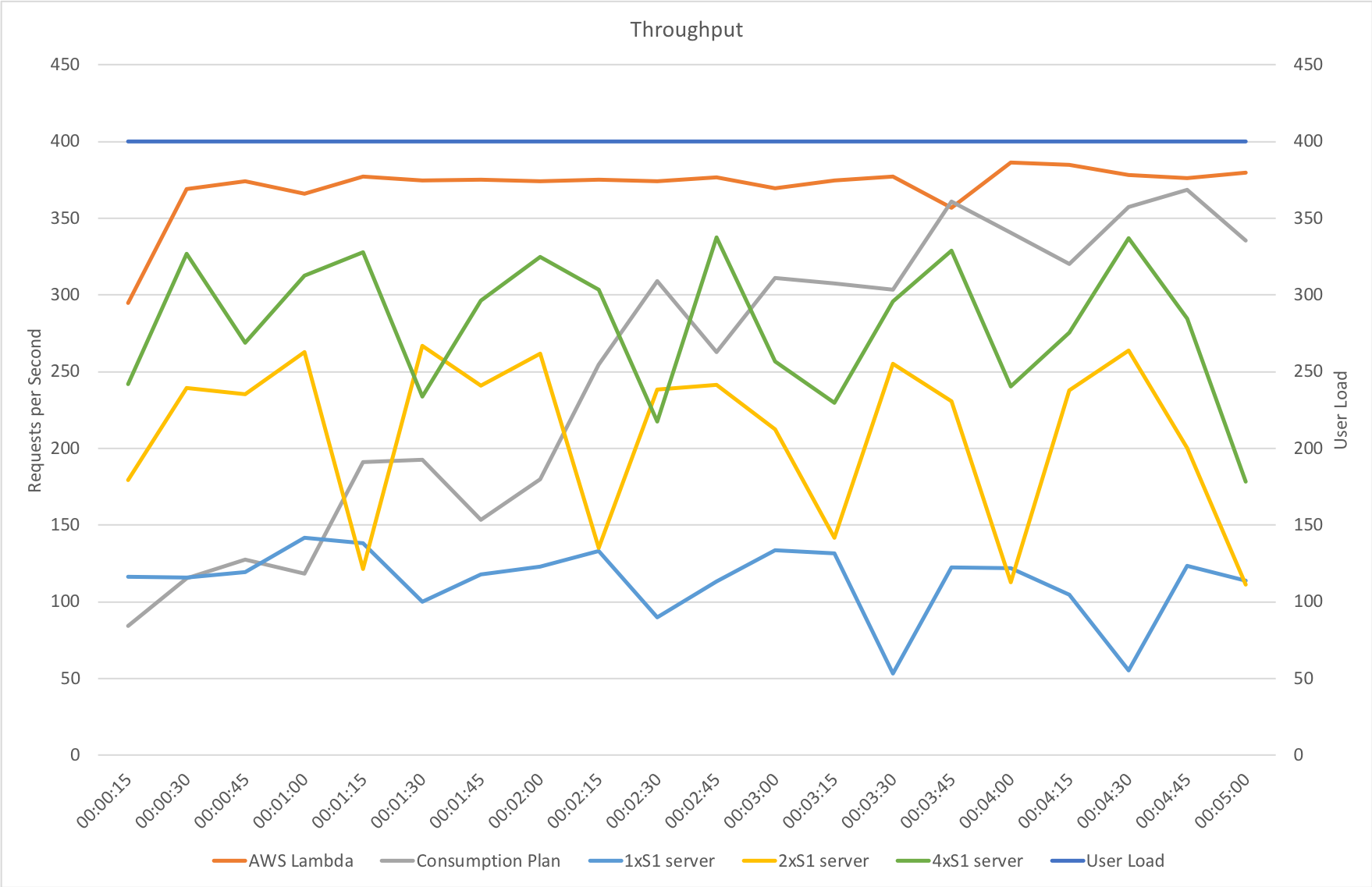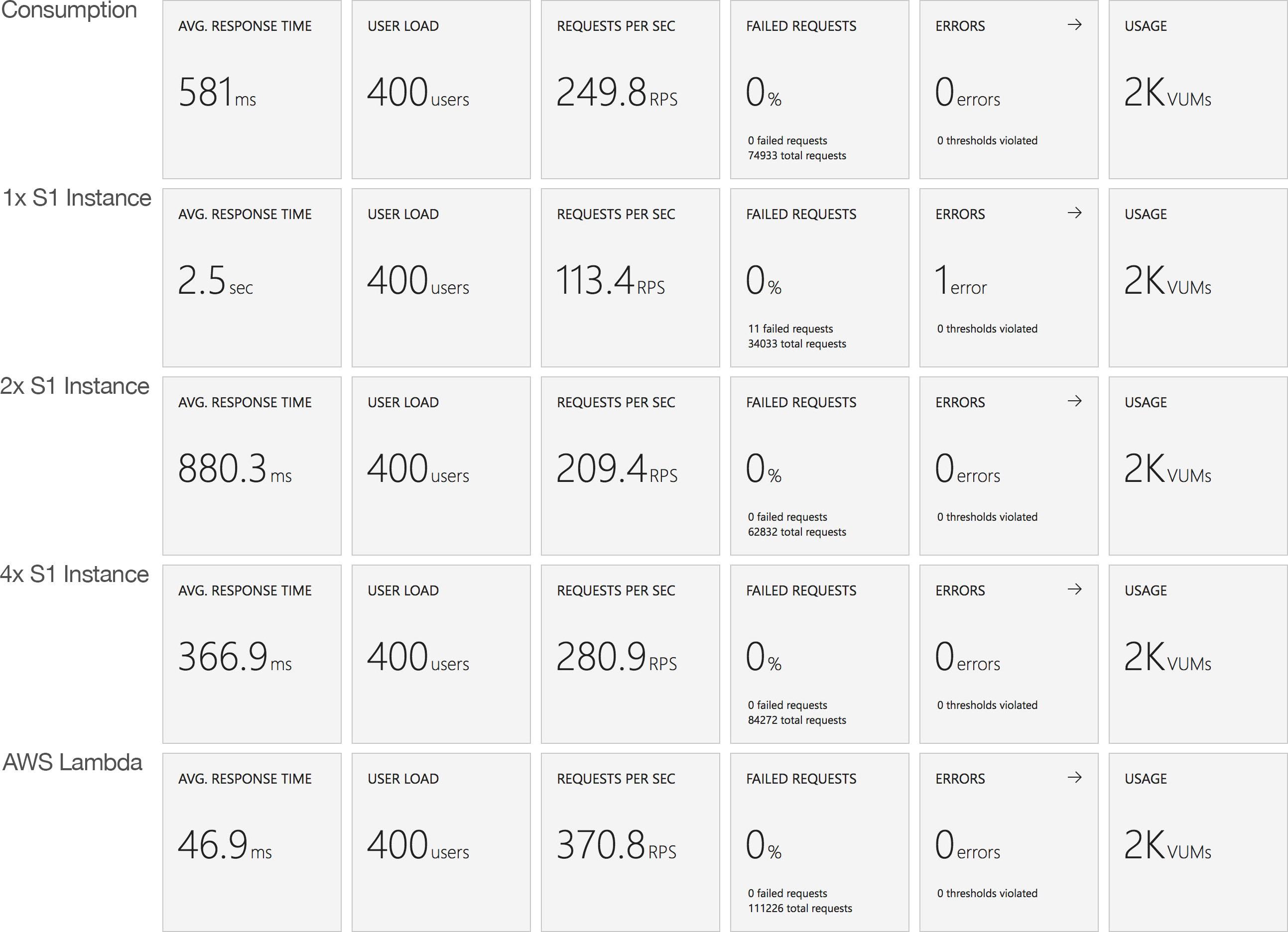If you're looking for help with C#, .NET, Azure, Architecture, or would simply value an independent opinion then please get in touch here or over on Twitter.
Since I published this piece Microsoft have made significant improvements to HTTP scaling on Azure Functions. I’ve not yet had the opportunity to test performance on dedicated app service plans but please see this post for a revised comparison on the Consumption Plan.
After my last few posts on the scaling of Azure Functions I was intrigued to see if they would perform any better running on a dedicated App Service Plan. Hosting them in this way allows for the functions to take full advantage of App Service features but, to my mind, is no long a serverless approach as rather than being billed based on usage you are essentially renting servers and are fully responsible for scaling.
I conducted a single test scenario: an immediate load of 400 concurrent users running for 5 minutes against the “stock” JavaScript function (no external dependencies, just returns a string) on 4 configurations:
- Consumption Plan – billed based on usage – approximately $130 per month
(based on running constantly at the tested throughput that is around 648 million functions per month) - Dedicated App Service Plan with 1 x S1 server -$73.20 per month
- Dedicated App Service Plan with 2 x S1 server – $146.40 per month
- Dedicated App Service Plan with 4 x S1 server – $292.80 per month
I also included AWS Lambda as a reference point.
The results were certainly interesting:
With immediately available resource all 3 App Service Plan configurations begin with response times slightly ahead of the Consumption Plan but at around the 1 minute mark the Consumption Plan overtakes our single instance configuration and at 2 minutes creeps ahead of the double instance configuration and, while the advantage is slight, at 3 minutes begins to consistently outperform our 4 instance configuration. However AWS Lambda remains some way out in front.
From a throughput perspective the story is largely the same with the Consumption Plan taking time to scale up and address the demand but ultimately proving more capable than even the 4x S1 instance configuration and knocking on the door of AWS Lambda. What I did find particularly notable is the low impact of moving from 2 to 4 instances on throughput – the improvement in throughput is massively disappointing – for incurring twice the cost we are barely getting 50% more throughput. I have insufficient data to understand why this is happening but do have some tests in mind that, time allowing, I will run and see if I can provide further information.
At this kind of load (650 million requests per month) from a bang per buck point of view Azure Functions on the Consumption Plan come out strongly compared to App Service instances even if we don’t allowing for quiet periods when Functions would incur less cost. If your scale profile falls within the capabilities of the service it’s worth considering though it’s worth remembering their isn’t really an SLA around Functions at the moment when running on the Consumption Plan (and to be fair the same applies to AWS Lambda).
If you don’t want to take advantage of any of the additional features that come with a dedicated App Service plan and although they can be provisioned to avoid the slow ramp up of the Consumption Plan are expensive in comparison.




Recent Comments